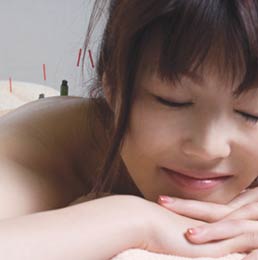
It's estimated that more than 8 million US adults have tried acupuncture. Research suggests that it may be useful for helping manage a wide range of medical conditions, including chemotherapy nausea, dental pain, addiction, stroke rehabilitation, headache, menstrual cramps, low back pain, carpal tunnel syndrome and asthma. So it's not surprising that acupuncture also may hold promise as an add-on to standard medical care for osteoarthritis.
In fact, one of the largest randomized studies ever done on acupuncture (Arthritis & Rheumatism, November 2006) found that it led to improvements in osteoarthritis symptoms.
The study by German researchers included more than 3,500 people with osteoarthritis of the hip or knee. Over 700 of these patients agreed to be randomly divided into an acupuncture group and a control group, which was included for comparison's sake and didn't receive acupuncture. The rest of the patients, who were interested in acupuncture but didn't consent to random assignment, got the same treatment as the acupuncture group.
The acupuncture treatment used small, hair-thin, metallic needles, which were inserted at specific points on the body. Those in both the randomized and nonrandomized acupuncture groups received up to 15 sessions over a three-month period. The number of needles and location of the placement points were chosen by each person's treatment provider, which was meant to reflect the way acupuncture actually is done in day-to-day life.
Everyone in the study also got standard medical care throughout this period. Pain, stiffness and disability decreased more in the acupuncture groups than in the control group. Quality of life also improved more among those who received acupuncture. What's more, the benefits of acupuncture were still evident three months later.
Acupuncture needles are very slender. While their insertion might cause a slight stinging or tingling sensation, it usually isn't painful. After being put in place, the needles sometimes are moved gently by hand or stimulated with electricity or heat.
In traditional Chinese medicine, vital life energy, called qi ("chee"), is thought to flow through the body along pathways called meridians. According to this view, blockages in the flow of qi can lead to disease, while stimulating specific points along the meridians can help remove blockages.
In contrast, Western medicine's explanation of how acupuncture might work focuses on the body's nervous, immune and circulatory systems. According to one theory, brain chemicals called endorphins may be released during acupuncture. These chemicals function as natural pain-relievers. A second theory focuses on the release of various other brain chemicals and hormones. These substances, in turn, help regulate immune reactions. A third theory suggests that acupuncture may work by increasing blood flow to the area around the needle. The increased flow of blood helps supply more nutrients and remove more toxins.
Even though scientists are still debating how acupuncture works, it's increasingly clear that it may. Another large randomized study involving people with osteoarthritis (Annals of Internal Medicine, December 21, 2004) — this one supported by the National Institutes of Health — also found that acupuncture as an adjunct to standard medical treatment led to reduced pain and improved function.
If you're interested in trying acupuncture, talk to your doctor first to make sure it's right for you. When choosing an acupuncturist, be sure to check credentials. Look for licensure by the state and/or certification by the National Certification Commission for Acupuncture and Oriental Medicine. In addition, about 3,000 medical doctors now use acupuncture in their practices. The American Academy of Medical Acupuncture offers an online directory of physicians who perform acupuncture (www.medicalacupuncture.org).
PLEASE NOTE: The studies and their findings that are presented in this article are for informational purposes only and are not meant to take the place of the advice of your doctor. By providing you with this information, Sanofi is not endorsing its content nor does it represent that the information is necessarily appropriate for you. You should consult with your doctor before starting any new health or exercise regimen.
References“Acupuncture.” National Center for Complementary and Alternative Medicine. Available at: http://nccam.nih.gov/health/acupuncture. Accessed September 6, 2011.
"Acupuncture in Patients with Osteoarthritis of the Knee or Hip: A Randomized, Controlled Trial With an Additional Nonrandomized Arm." C.M. Witt et al. Arthritis & Rheumatism. November 2006, vol. 54, no. 11, pp. 3485-3493.
“Acupuncture.” Mayo Clinic. Available at: http://www.mayoclinic.com/health/acupuncture/MY00946. Accessed September 6, 2011.
"Effectiveness of Acupuncture as Adjunctive Therapy in Osteoarthritis of the Knee: A Randomized, Controlled Trial." B.M. Berman et al. Annals of Internal Medicine. December 21, 2004, vol. 141, no. 12, pp. 901-910.